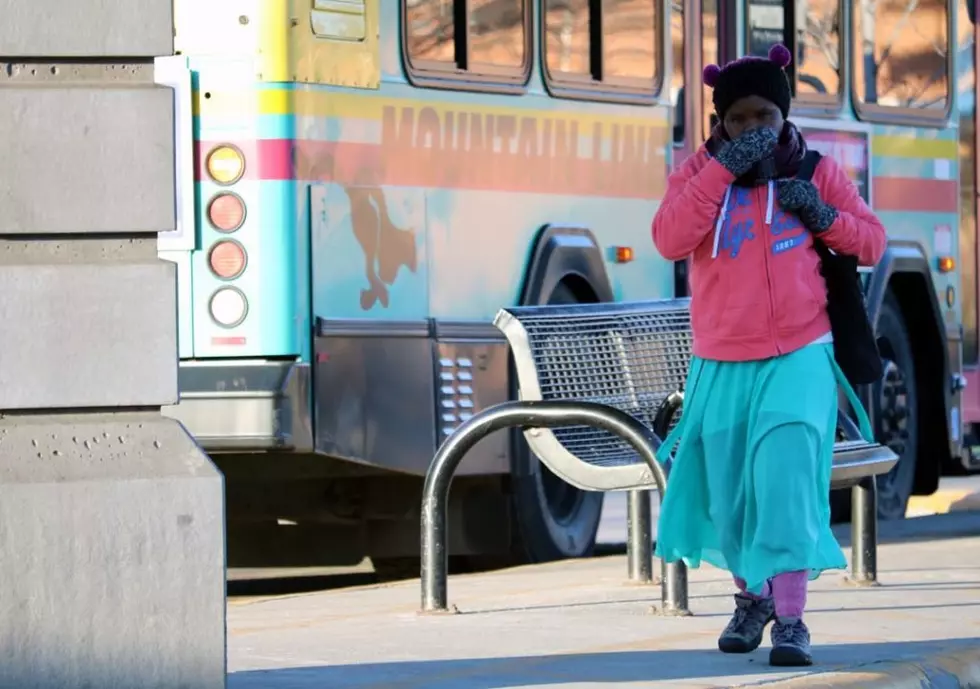
Baby it’s cold outside – but just wait 25 years
By Martin Kidston
With a weak La Nina setting up in the Pacific Ocean this winter, the Montana Climate Office is forecasting near normal temperatures for western Montana, with a slight increase in precipitation.
By mid-century, however, weather models indicate a 6-degree increase in average temperatures and a significant jump in precipitation. The number of winter days below freezing will decline by 40, holding vast implications for winter snowpack and spring runoff.
Nick Silverman, a climate expert with the Montana Climate Office based at the University of Montana, offered his current and long-range climate predictions for western Montana at the Clark Fork Coalition on Wednesday night.
With climate change driving global temperatures to new highs, normal temperatures in western Montana may be the new “cool.”
“We're probably looking at normal conditions this winter for what we're used to, and slightly wetter conditions for precipitation,” Silverman said. “If they're predicting average or normal temperatures, that's like the new cool.”
Using weather models from past La Nina events combined with other historical data, Silverman believes this winter will be cooler and wetter than last year, when a relatively strong El Nino pattern dominated the Pacific Ocean.
Known as the El Nino/Southern Oscillation, or ENSO, the phenomenon controls winter climate over a vast region, including western Montana. La Nina years are marked by warming equatorial waters in the Pacific Ocean while El Nino years reflect cooling Pacific waters.
That generally results in cooler, wetter Montana winters.
“There's a 63 percent chance that La Nina conditions will occur in early winter, and a 53 percent chance that it will occur in late winter, with neutral conditions likely by late spring and summer,” Silverman said. “Last year, we saw really strong El Nino conditions, but now we're seeing very weak La Nina, and less probability of it really holding.”
Using a complex combination of weather models and historical data, Silverman also predicted mid-century climate conditions for western Montana. The children of today's children will be living in a much different climate than what their ancestors knew.
“We're looking at about a 6 degree Fahrenheit increase in annual temperatures for the western part of the state,” Silverman said. “The minimum increase is 4 degrees and the maximum is 8. The model agreement is 100 percent. They don't agree on the magnitude, but they agree 100 percent that it's getting warmer.”
Applying the data, Silverman said it's likely that western Montana will bear the brunt of the changes. The number of days with temperatures below 32 degrees, or freezing, will be reduced by 40 days. Temperature increases in August could be as high as 7 degrees.
While temperatures continue to climb, so will precipitation. Western Montana is likely to see an average increase in moisture of 1.6 inches, with much of that falling as rain. Summer is expected to get drier.
“As long as you're below freezing, say 20 or 25 degrees, all that precipitation is going to go to snowpack until you're at 30 or 35 degrees, then it all goes to rain,” he said. “We're going to see increases in precipitation, but it's that temperature stuff that really matters. You can see snowpack doing okay until mid-century. That's when the temperature really gets cranked up.”
Silverman noted that climate and weather are two different topics. Weather happens today while climate is a long-term average over a number of years. That long-term average, as predicted, will likely result in reduced snowpack, an earlier runoff, more wildfires and lower summer streamflows.
When pressed, Silverman said “emissions scenarios” are leading to warmer temperatures and shifting weather patterns. While greenhouses gasses are required for an inhabitable planet, too much of them could prove detrimental, he said.
“It's like today, if you went out in just a T-shirt, you'd be really cold,” Silverman said. “So you put a jacket on and that's like your greenhouse gas. You put a jacket on and it warms you up and you're comfortable. But then you put another jacket on, and then another jacket and then another, and before you know it, it's really hot. That's kind of what we're doing with greenhouse gasses.”
Contact reporter Martin Kidston at info@missoulacurrent.com
